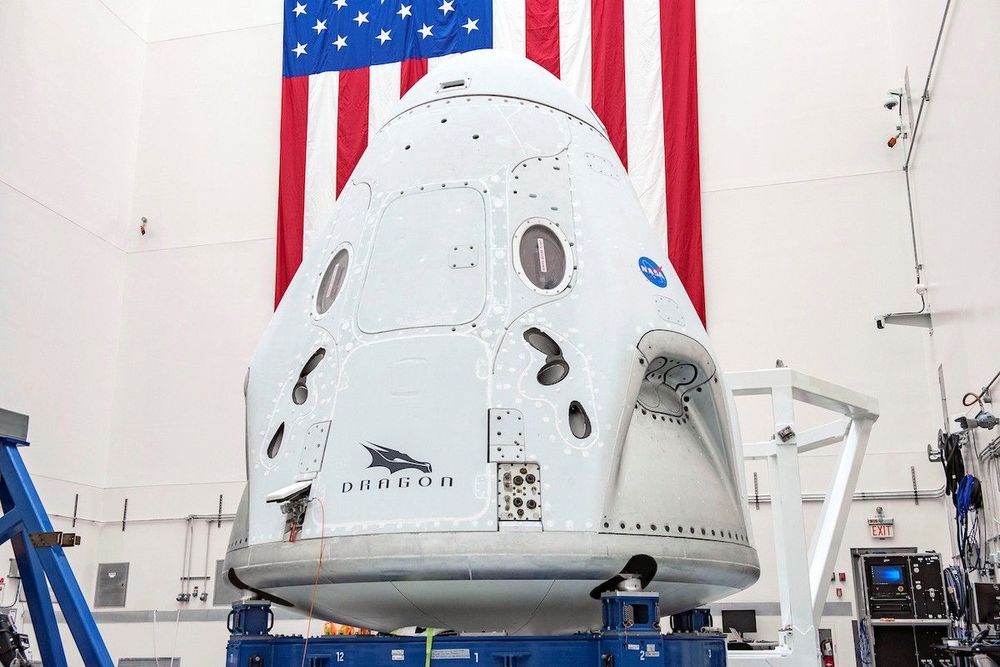Get the latest international news and world events from around the world.


Experimental Realization of Zenneck Type Wave-based Non-Radiative, Non-Coupled Wireless Power Transmission
Scientific Reports volume 10, Article number: 925 (2020) Cite this article.

NASA, SpaceX set May 27 as target date for first crew launch
A decade in the making, NASA and SpaceX have set May 27 as the target launch date for the first crewed space mission to launch into orbit from U.S. soil since the retirement of the space shuttle in 2011.
NASA astronauts Doug Hurley and Bob Behnken, two veterans of the shuttle program, will ride SpaceX’s Crew Dragon spacecraft into orbit on top of a Falcon 9 rocket from pad 39A at NASA’s Kennedy Space Center in Florida. That’s the same historic launch facility used by the last space shuttle flight.
Liftoff time on May 27 is expected to be around 4:32 p.m. EDT (2032 GMT), when the Earth’s rotation brings the launch pad under the orbital plane of the International Space Station.


About the Event 201 exercise
Talk being ahead of the curve;
Event 201 was a 3.5-hour pandemic tabletop exercise that simulated a series of dramatic, scenario-based facilitated discussions, confronting difficult, true-to-life dilemmas associated with response to a hypothetical, but scientifically plausible, pandemic. 15 global business, government, and public health leaders were players in the simulation exercise that highlighted unresolved real-world policy and economic issues that could be solved with sufficient political will, financial investment, and attention now and in the future.
The exercise consisted of pre-recorded news broadcasts, live “staff” briefings, and moderated discussions on specific topics. These issues were carefully designed in a compelling narrative that educated the participants and the audience.
The Johns Hopkins Center for Health Security, World Economic Forum, and Bill & Melinda Gates Foundation jointly propose these recommendations.

Discovery of T cells response spectrum could new shed light on immune diseases
The discovery that immune T cells have a spectrum of responsiveness could shed light on how our immune system responds to infections and cancer, and what goes wrong in immune diseases. Researchers at the Wellcome Sanger Institute, Open Targets, Biogen, GSK and their collaborators found that T cells responded very differently to immune signals the more ‘training’ they had been exposed to, rather than being a simple switch from naïve to experienced. This could help guide research into finding drug targets for immune diseases such as asthma and rheumatoid arthritis.
Today’s study (14th April), published in Nature Communications, also revealed that even highly trained memory T cells are less rigidly specialized than previously thought, and are able to respond to new immune signals. This has implications for immune research, and could help understand for example how the body responds to infections.
T cells are key white blood cells that fight infection and disease, and act like police directing the immune system response. Babies are born with inexperienced — naïve — T cells, which change as they come into contact with bacteria or viruses, to create specific memory T cells that can ‘remember’ fighting against these infections. These memory T cells can then react more quickly the next time they meet the same threat, telling the immune system to remove the infection rapidly. This is how vaccination protects against disease, by delivering a safe form of an invading virus or bacterium, to train our immune system by building up specific memory T cells.

Researchers reveal the mechanisms behind a natural bacteria killer
Scientists are one step closer to adapting the bacteria-killing power of a naturally occurring nanomachine, a tiny particle that performs a mechanical action.
In a study published in Nature, a UCLA-led team of researchers describe how the nanomachine recognizes and kills bacteria, and report that they have imaged it at atomic resolution. The scientists also engineered their own versions of the nanomachine, which enabled them to produce variations that behaved differently from the naturally occurring version.
Their efforts could eventually lead to the development of new types of antibiotics that are capable of homing in on specific species of microbes. Drugs tailored to kill only a certain species or strain of bacteria could offer numerous advantages over conventional antibiotics, including lowering the likelihood that bacteria will develop resistance. In addition, the tailored drugs could destroy harmful cells without wiping out beneficial bugs in the gut microbiome, and they could eventually offer the possibilities of being deployed to prevent bacterial infections, to kill pathogens in food and to engineer human microbiomes so that favorable bacteria thrive.

NASA to launch astronauts from U.S. soil for the first time in nearly a decade with help from SpaceX
NASA and SpaceX are targeting May 27 for the launch of Demo-2, the first launch of NASA astronauts from the U.S. since 2011 and the first crewed launch for Elon Musk’s space company.
As its name implies, Demo-2 will be the second time the company launches its Crew Dragon capsule to the International Space Station. But, unlike Demo-1 last year, this time two astronauts will be on board – a pair that will be the first NASA astronauts to launch from the U.S. since the end of the Space Shuttle program in 2011.